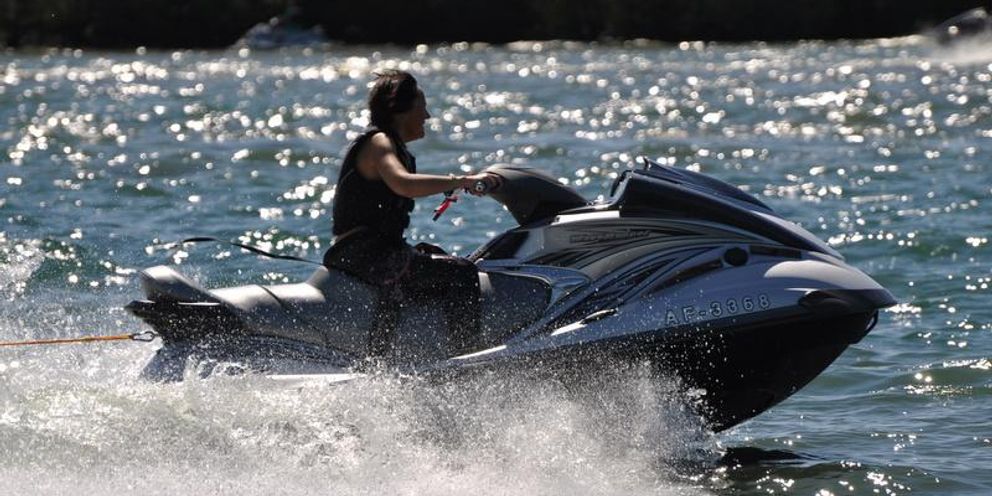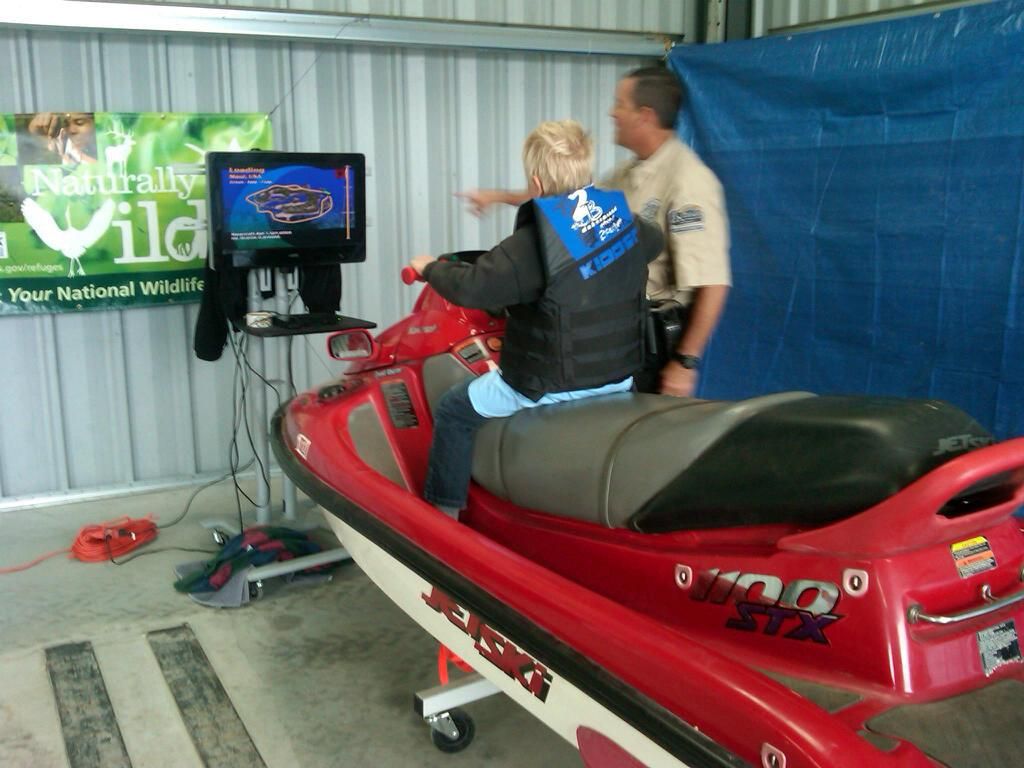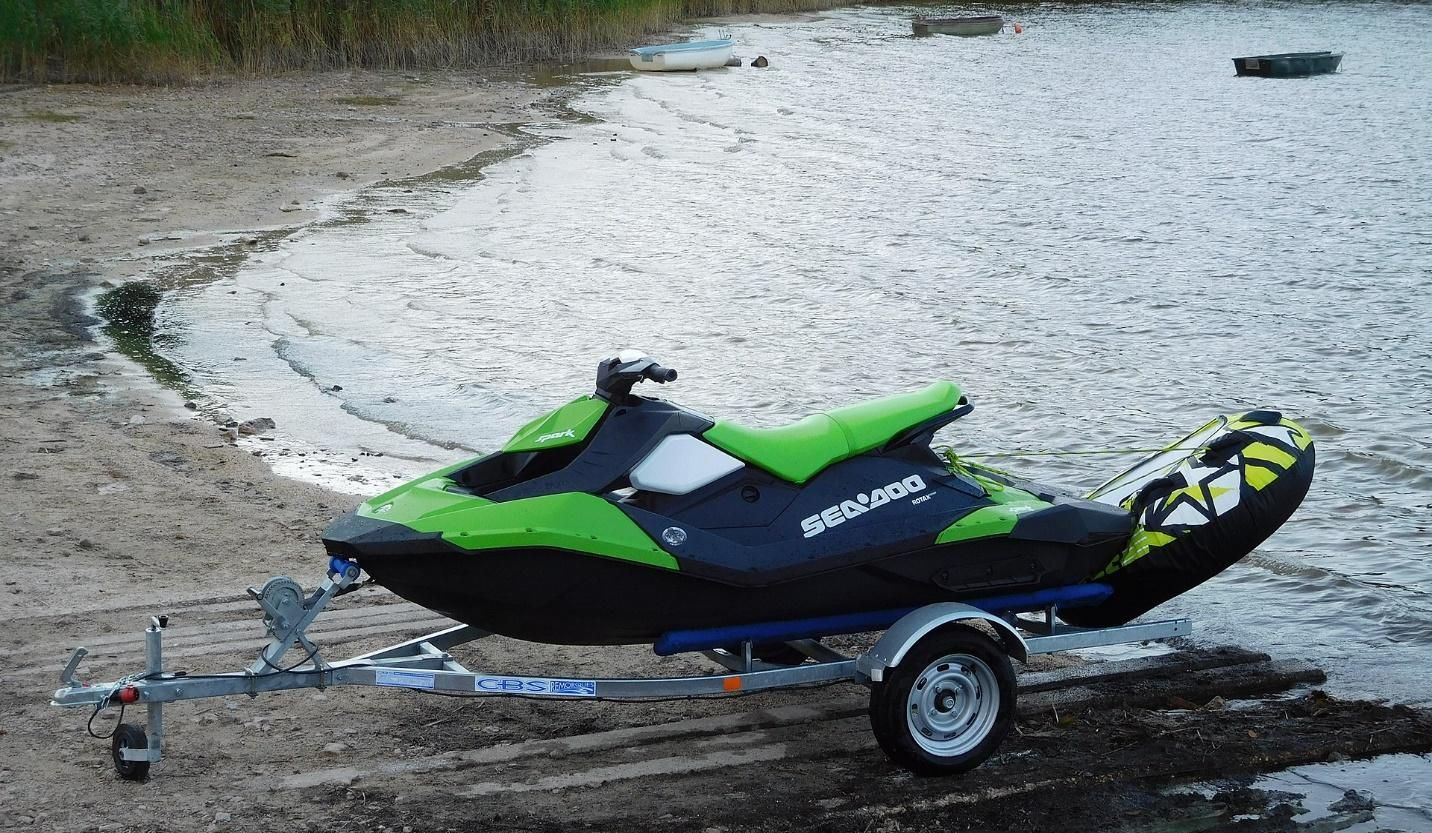
How to Ride a Jet Ski - A Driving & Docking Guide
Image Credit: John Carver/ Creative Commons Attribution-Share Alike 2.0
Open air, clear waters, and a sunny day, can set the stage for a thrilling ride on a jet ski! With PWCs going more than 60 mph, nothing is quite like the adrenaline rush that comes with jumping waves on a lake. However, safety should be priority one and knowing how to control, maneuver, and obey the laws pertaining to a jet ski is paramount.
Following is a complete guide to understanding and operating a jet ski.
What Are Jet Skis?
The word Jet Ski itself is owned by the Japanese auto company, Kawasaki. It is a trademarked name of their Personal Water Crafts (PWC). So, what are personal water crafts? Simply put, PWCs are small recreational watercraft in which the operator is sitting, standing, or kneeling on the vessel.
All Jet skis use an impeller for propulsion. The impeller takes in water from a wide opening and pushes it through a smaller exit. The water coming in through the blades increases the speed of a jet ski by pushing the surrounding water and creating a forward motion.

Image Credit: USFWS Mountain-Prairie / flickr
Personal Watercraft Registration & Safety Courses
Laws regarding personal watercrafts differ from state to state, but the general guidelines stay the same. Starting with location, many areas restrict any kind of boating activity to preserve marine life. You will need to check with your local marine guides to know if PWCs are allowed.
Registration
All personal watercrafts need to be registered in most states. For instance, in Florida, jet skis are treated as vessels and need to have a title. This can be done at license plate agent offices around the country, with most states offering a registration that needs to be renewed every 1-2 years. To register your new jet ski, you need documents like title application, proof of ownership and identity document. This list can get longer or shorter depending on where you live.
License
Having a license to operate a jet ski is required in most states. Depending on one's age, you may also be required to complete a boating safety course. Boating safety courses are offered throughout the country by state boating agencies as well as qualified volunteer organizations, such as the U.S. Coast Guard Auxiliary and the U.S. Power Squadron.
What to Bring for Your First Jet Ski Ride
Open waters are always thrilling, but also dangerous if you're not prepared. Of course, there is a drowning risk, but there are many other things that can go wrong when riding a jet ski. That's why you should always follow some basic steps, including:
- Having non-inflatable personal flotation devices or any approved life jackets.
- Carrying registration documents and ID
- Having safety and signaling devices: whistle and light.
- Making sure to have plenty of gasoline.
- Having proper clothing, including wetsuits and sunglasses.
- Attaching the kill switch lanyard to the operator
- Keeping your jet ski in deep waters, to avoid damage
Before You Start
Understand your watercraft and its maneuverability. Some jet skis are large and bulky, weighing up to 4 times the rider's weight. If this is the case, making quick turns and cutting corners can be difficult. Avoid any congested areas and always keep a safe turning radius. Some PWCs require a standing operation while others need the rider sit. If you have a sitting jet ski, take a low centered position with your knees bent. This will keep your weight centered on the jet ski, minimizing unwanted swerves and turns.
Practice to get a sense of the throttle response and remember that turning a jet ski requires turning the handlebars and shifting your weight to the side.
Image Credit: Cjp24, CC BY-SA 4.0, Wikimedia Commons

How To Launch a Jet Ski from a Trailer
If you are using a ramp for the first time, look for an empty one where you can take your time. Make sure the ski is secured to the trailer's winch and slowly start backing down the ramp. Once you reach the water's edge, follow these steps:
- Remove the strap from the back of the PWC
- Check that your jet ski is fueled up and will start
- Back your trailer into the water until the rear of your jet ski starts to float
- Release the safety chain and loosen the winch strap
- Push your jet ski into the water
- Make sure the water is more than 3 feet deep before starting your jet ski
- Start your jet ski and let the fun begin!
Operating a Jet Ski
Before getting started riding the waves and cruising the shores, let's look at the main controls and what they do
Jet Ski Controls
The dominant feature is the handlebar, which has a series of control buttons and steers the direction of your PWC. Turning it to the right steers the craft towards the right. The opposite is true for turning left.
The engine start/stop button turns the jet ski up and provides ignition to fire up the motor. Simply push this button to start or stop your jet ski.
The most important control on your jet ski is the kill switch. You must always have the lanyard attached to your clothing and the switch. This prevents the PWC from continuing and moving away from you in the event of a fall.
You will find two levers on either side of your handlebar. The right lever electronically controls the throttle of your jet ski. To increase speed, pull on the lever and to maintain speed, hold it steadily. Releasing the lever will slow down your jet ski. The lever on the left side is for the Intelligent Braking System (IBR). This lever doubles as a water brake and reverse gear of the jet ski.
You will also find a small digital display that indicates the speed, gear, temperatures, and other useful functions like the fuel bar. There might be other buttons on the handlebar for changing driving modes, but the essential functions are the same on most jet skis.
Riding your Jet Ski
Now that you are familiar with your jet ski controls, you're ready to ride.
First things first; when starting a jet ski, check the LCD indicator for which gear you are in. Some older models start with a forward gear. This can be challenging when you are launching your jet ski or close to the beach. If your watercraft starts in neutral, it will stay relatively stationary in the water.
For modern vessels, start your personal watercraft with the handlebar straight, and use the braking lever on the left to reverse your jet ski. Once, in deeper waters, pull on the throttling lever to activate thrust and move forward. The more you pull, the more power and speed you generate.
Turning the Jet Ski
Most accidents involving jet skis happen when the rider fails to turn in time and doesn't understand the turning radius of a jet ski. You can find many videos online of jet skis crashing into docks because of this.
Jet skis require constant throttle to make turns. You should not release the gas and turn the handlebar, expecting the jet ski to slow down while it turns. To make a sharp turn in either direction, steer the handlebar towards the left or right and pull on the throttle lever.

Image Credit: Rob Rhyne / flickr
Riding Positions
Sitting Riding Position
This is generally considered a more comfortable option and easiest to get used to. One thing to keep in mind is to hold the handlebars firmly, but not too tightly. Relax your shoulders. This way you won't feel as tired, and your back is less likely to become sore. Keep your body close to the watercraft and bend your knees slightly while sitting. When your weight and center matches with the PWC, the turning is easier and more comfortable.
Stand up Riding
When you're at speed, your watercraft can jump waves. To increase control over your jet ski, shift your weight and keep your feet firm on the jet ski with your knees bent. Riding waves is one of the most exciting PWC activities and mastering this skill is certain to bring endless joy.
Getting Back on the Jet Ski
A jet ski ride is not complete without falling off. Whether you fall off accidently or want to have a swim, getting back on your jet ski can be tricky. The easiest way to get back on your jet ski is from the back, where the angled frame of the water craft is already lowered and where most of the weight lies. Attempting to board the ski from the side can topple the jet ski and make it hard to mount.

Image Credit: Will White/ flickr
Docking A Jet Ski
After you've had your fun on the water and are prepared to call it a day, you need to dock your PWC. How to dock your jet ski depends on the current and wind at the time.
Docking with No Wind
If there's little or no wind or current, take the following steps:
- Approach the dock at a 20-degree angle.
- When roughly two PWC lengths away, steer away from the dock and throttle upto push the stern around towards the dock.
- If necessary, shift to reverse and throttle up to slow forward momentum.
- After some practice you'll be able to stop right next to the dock.
Wind Off the Dock
If there is wind blowing off the dock, modify your approach, as follows:
- Increase the angle of approach to somewhere between 35 and 45 degrees.
- This situation requires more power for approaching the dock.
- When you are about a half-PWC length away from the dock, turn sharply away from the dock and throttle up to bring the stern of the craft around until you are parallel with the dock.
- Be ready to toss a line to someone on the dock, or to grab a cleat on the dock, to keep the craft from drifting away.
No-Wake Areas
You might have seen boats leaving behind a trail. A wake is the V-shaped wave left behind by boats traveling at higher speeds. No Wake Zones are classified to stop the waves from disturbing plant and animal habitat and to protect docked boats from damage.
You can easily spot no wake zones by white and orange markers floating on top of the water. Be sure to obey the water speed limits and to avoid creating waves.

Image Credit: TheShiv76 / Pixabay
Conclusion - Is it Hard to Drive a Jet Ski?
Riding a jet ski is a great way to enjoy summer. If you are thinking of getting one, don't hesitate. They are easy to ride and with practice, you'll be riding like a pro in no time.
Jet Ski FAQs
- Can I stand on a jet ski?
There are two different types of jet skis; one designed for standing and another designed to be used in a sitting position.
- How fast should I go on a jet ski?
Even though jet skis can hit up to 67 mph, beginners should only go as fast as comfortable and able to maintain full control.
- How do you brake on a jet ski?
You can brake on a jet ski by pulling on the brake/reverse lever on the left side of the handlebar.
Updated